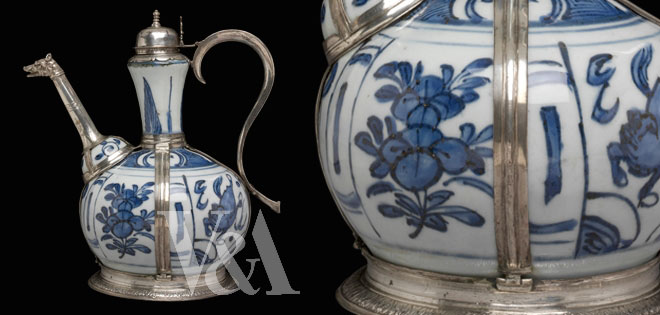9 Chinese Porcelain Mounted or Eenamelled in Europe

The earliest Chinese porcelains to reach Europe were costly rarities. Like other objects in precious and exotic materials they were often mounted in silver in recognition of, and to enhance, their value and status. This frequently resulted in Chinese wares being given new functions. By combining one or more pieces with metal mounts, bowls could be converted into cups, jars into tankards, and kendi or vases into ewers.
By about 1700 Chinese porcelain was being imported in vast quantities by Dutch and English merchants. It had become a much more familiar product, and some of these imports were made to European design specifications. About this time, a market began to emerge for Chinese pieces decorated in Europe with western styles and subjects. Ceramic painters in the Netherlands, England and elsewhere met this demand by embellishing plain or sparsely-decorated Chinese wares with enamel colours fired onto the glazed ware. In addition, some Chinese porcelains were decorated in Japanese styles, as Japanese porcelains were greatly admired in late seventeenth and eighteenth century Europe, but were expensive and in short supply. Most of this work was carried out in small family-run decorating studios.




